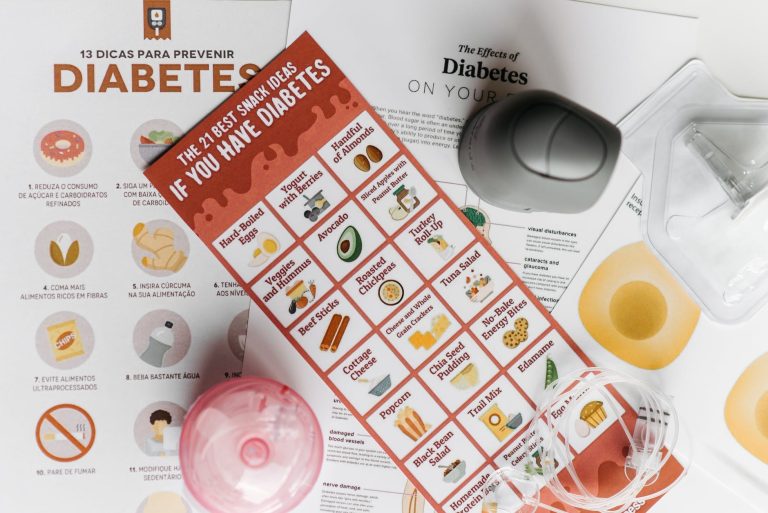I and several cosigners/co-authors will be submitting a citizen’s petition to the FDA. Below I share the general content I will be submitting. I believe there is enough data to approve Simufilam with post-marketing surveillance with my fellow Redditors.
The actual submission to the FDA will not contain personal or unnecessary information that has been added for context and clarity for a non-scientific audience.
TLDR: It is my opinion based on my risk-benefit analysis: Simufilam (SAVA’s Alzheimer’s drug) must receive accelerated approval and move to phase 4 post-marketing surveillance.
- Severely unmet medical need. Every year 120,000 AD patients die with no effective treatment.
- Simufilam (SAVA’s AD drug) has been dosed 149,120 with no documented severe adverse effects. (Some adverse events may present as the number of doses are increased). Still, Simufilam has an excellent safety profile based on the current data.
- Publically available data showing improvement across 34 measures of AD.
- The FDA has acted on similar data in the past to fast-track medications to market.
- If the FDA rejects my petition, I believe Phase 3 and CMS trials will be used to advance Simufilam to market based on Simufilam’s six-month interim analysis of the respective trials.
- I am not affiliated with SAVA as an employee, contractor, or any other way except that I am a long investor. I plan to hold my investment as long as the data remains consistent. I may consider hedging before the eventual binary outcome. This is not medical or financial advice. It is only the ramblings of a retarded deluded mega bull who has been wrong plenty of times in the past. Do your own due diligence.

Artist William Utermohlen was diagnosed with AD (Alzheimer’s disease) in 1995. In the figure above, he painted what he saw in the mirror. As we can see from his last painting in 2000, he spent the final seven years of his life incapable of seeing the world, effectively blind. He died in 2007.
This view of AD from a patient perspective is tragic and touching. It elicits anxiety for those of us with sound minds. What’s it like to look into the mirror, unable to see one’s own face for seven years? What else are they unable to see?
I practice at one of the largest community hospitals in the southeast. As you know, for every 1000 medicare patient days in the hospital, 538 are associated with AD. AD is predictive of an extended and complex hospital stay with increased odds of death (compared to patients who do not have AD).
1) Overwhelming Public Need
I have witnessed numerous families bring their elderly father or mother to the ER, saying, “we cannot take care of him/her.” Not because they are forgetful, but because they are easily agitated and turn aggressive. These families do not ask, “is there a treatment?”. They have already navigated a complex medical system and know AD is terminal with no effective treatment. Heart attacks, strokes, sepsis, and other diseases seen in hospitals have a myriad of treatments. AD does not. AD is the sixth leading cause, and by some estimates, it is the third leading cause of death. See “2023 ALZHEIMER’S DISEASE FACTS AND FIGURES“
As a patient advocate, I elected to present anecdotal data to contextualize and humanize the numerous awful statistics we all know too well.
I review these weighty problems with the FDA to help frame my logic and construct a petition for why Simufilam must be expediently granted accelerated approval and advanced to phase 4 post-marketing surveillance.
After reviewing the FDA’s mission statement, I am operating on the premise that the FDA evaluates medications based on risk benefits.
- There is an overwhelming and urgent need (discussed above)
- Simufilam’s safety data is unblemished. (The risk)
- The cognitive data, by my judgment, is a treatment effect, not placebo. (The benefit).
2) Safety Data:
Simufilam has been administered to patients across 5 trials (ClinicalTrials.gov Identifier: NCT03748706, NCT04079803, NCT04932655, NCT04388254, NCT04388254).
More precisely, 39,620 doses of Simufilam were administered from the publicly available data, with no reported serious adverse events. Further, Patients tolerated Simufilam well, as is evident by the low attrition rate.
In addition, there are 150 patients enrolled in the “open-label extension trial” (OLE). They do not have publicly available information; however, it is reasonable to assume the FDA is privy to safety data. The standard protocol requires study sites to report serious adverse events immediately to the FDA. Those OLE patients were administered another 109,500 doses.
Factoring in the OLE patients, in totality, 149,120 doses were administered without serious safety events across multiple trials.
3) The data:
Data associated with Simufilam has been remarkably consistent.
A 28 day multi-center, placebo-controlled, randomized trial with 64 patients measured:
- Abeta42
- Total Tau
- P-tau181
- Neurogranin
- Neurofilament Light Chain
- YKL-40
- Paired Associates Learning Test
- Spatial Working Memory Test
- IL-6
- sTREM2
- HMGB1
- Albumin
- IgG
- Filamin A Linkages to alpha7 Nicotinic Acetylcholine Receptor
- Toll-like Receptor 4 in Subject Lymphocytes
- Plasma P-tau181
- SavaDx
Cassava Sciences stated:
“98% of patients treated with Sumifilam 50 mg or 100 mg b.i.d. for 28 days showed improvements in validated biomarkers of AD pathology; neuroinflammation; and neurodegeneration; with no safety issues.”
Open-label Extension data tested:
- P-tau
- Total Tau
- Abeta42
- Neurofilament light chain
- Neurogranin
- YKL-40
- Soluble TREM2
- HMGB1
- ADAS cog-11 (reported at 6, 9, and 12 months)
- NPI (reported at 6, 9, and 12 months)
- SavaDx
Tallied up, we have 34 different measures over twelve months and twenty-eight days.
Now, let us focus on the data which is clinically the most relevant-ADAS cog, and NPI.
A valid criticism of the twelve-month OLE data is that it is open-label, susceptible to placebo effect. However, a more comprehensive look into the literature concerning AD, ADAS-cog, and placebo reveals the treatment effect highly probable and Placebo effect unlikely.

A meta-analysis published by Ito et al. looked at placebo response data in 19,972 patients between 1990 and 2008. The disease progression in mild to moderate AD patients was estimated at 5.5 points per year.
The disease progression model proposed by Ito et al. shows the expected cognitive decline over time within a 90% prediction interval (shaded area). This suggests a limit to the observed placebo effect as patients do not typically improve from baseline past six months. In a follow-up analysis, Ito et al. also highlight that the placebo response tends to be more significant in the first few months.

A follow-up meta-analysis by Zhang et al. also looked at placebo response data in 19,210 patients between 1992 and 2019. The disease progression rate was estimated as 5.82 points per year, although this varied depending on region, age, and baseline ADAS-Cog scores. It’s also suggested that placebo effect plateaus at approximately 16 weeks in clinical trials.
Simufilams ADAS-cog data superimposed on Cohorts mentioned above:

The data from Ito et al. and Zhang et al. all conclude that the placebo effect has its limits. A similar pattern can be seen by evaluating the placebo group of Aduhelm. Placebo’s effect is less robust and shorter-term. Based on the three sizable cohorts, clear cognitive decline is expected and undeniable as measured by ADAS-cog. Further, it is predictable and measurable. Across the two metal analyses and Aduhelm trial the ADAS-cog declined from 5.2 to 5.8 point decline. So, if a treatment group can show a large enough benefit, such as an improvement from baseline ADAS-cog at twelve months or greater, this is likely beyond the extent of the observed placebo effect in published literature. We will discuss the significant treatment effect noted below.
Taking a closer look at the delta between the above cohorts and the OLE ADAS-cog data, overall, the delta is an astonishing 8.2-9.2. In addition, subgroup analysis shows 68% of the patients had an improvement of ADAS-cog of 6.8. This cohort’s delta is 11.8 to 12.6. By my estimation, this can not be explained by placebo.
Suppose the FDA is looking for a twenty percent decline in the rate of the natural progression of AD, then that is equivalent to ADAS-cog 4.64 – 4.16. and respective deltas of 1.16 -1.04. Effectively Simufilam would have to perform at 14% of its OLE data to get approval. This, plus considering the supportive surrogate data, makes phase three a foregone conclusion, in my opinion.

As mentioned above, behavioral disturbances are the explicit reason families abandon their loved ones in the ER. Caregiver stress is cited in “Alzheimer’s facts and figures” as having numerous unfavorable outcomes. Worse, physicians are often forced to use antipsychotics for dementia-related psychosis and agitation, which increases the risk of death in the elderly. Restraints (a generous way of referring to tying patients to the bed) are an unfortunate last resort used in the hospital setting to prevent patients from harming themselves and staff. Simufilam use resulted in markedly fewer behavior disturbances, and this data continues to improve with time.
Fast-tracking a medication after a single-arm study would not be an unprecedented action by the FDA. As Ke Liu, MD, PhD cites here.
As is known, the cognitive data was collected over sixteen clinical sites across the US and Canada by independent Physician PI’s and associated staff (unaffiliated with Cassava Sciences). The chain of custody was made transparent and verified by independent biostatisticians.
AD claims the lives of 13 patients every hour, and if the FDA allows phase three trials to continue for two years, then we risk the deaths of over 240,000 patients. As functional status is an excellent predictor of morbidity and mortality. I believe by preserving cognitive function, Simufilam will also preserve functional status (as the two are highly correlated). It may take years to see a mortality benefit, but waiting years in the setting of limited risk is unacceptable.
I and my cosigners are humbly and optimistically submitting this Citizens Petition to review m my risk-benefit analysis. I look forward to the FDA’s correspondence.
If you’d like a lot more reading material on SAVA, please see the posts pinned to my profile.
This article was written by u/Internal_Ad_1091.




